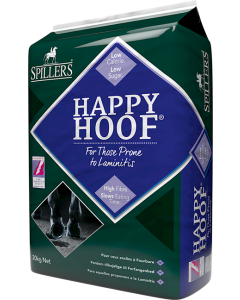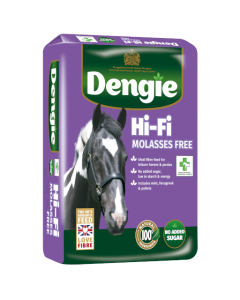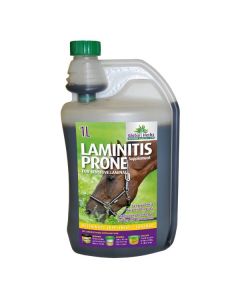How to spot the early signs of Laminitis
-

- 13 Apr 2023
- 0 Comments

Laminitis can affect any horse or pony of any age, weight, or time of year. It is one of the biggest causes of lameness and it can be fatal, so every horse owner needs to be alert and be aware of the signs of laminitis in their horse, all year round.
What is Laminitis?
The painful foot disease is usually seen in the front feet of your prone horse. It causes inflammation of the laminae tissues that attach the hoof to the pedal bone in the foot. In cases of chronic equine laminitis, the laminae tissue starts to break down and die, causing the hoof and pedal bone to separate and the bone to sink and/or rotate. If the pedal bone sinks too far, it can protrude from the sole.
What signs should you look out for?
It can be easy to miss early signs of laminitis, but the sooner you see the signs, the greater the likelihood of your horse making a full and healthy recovery. If your horse is showing the following signs, speak to your vet immediately:
- Shifting weight from foot to foot
- Foot tenderness
- Heat in the hooves
- Reluctant to move
- Ridged rings on the hoof that can be seen and felt
- Obvious lameness or a pottery or shortened stride
- Attempts to move weight off the front feet and onto the hind legs
- Raised digital pulse (felt behind the pastern)
It is very important to spot these signs as early as possible, remove the cause and treat the condition. With foot support and realignment, there is a good chance of a full recovery.
What can we do to reduce laminitis?
- Don’t let your horse get too overweight- Any horse or pony, fat or thin, can get laminitis at any time of the year, but obese animals may be more susceptible. Keep an eye on your horse’s weight all year round and keep up with a regular exercise routine.
- Control access to grass- Laminitis can occur at any time of the year, but in spring and autumn, flushes of growth can heighten the risk. In spring when the grass starts growing, don’t let susceptible horses eat too much. Actively growing grass contains higher levels of fructan (the storage form of sugar), which can increase the risk of pasture-associated laminitis. Try strip grazing to restrict access to grass or introduce a grazing muzzle.
- Turn your horse out overnight- In the growing season, grass contains fewer fructans at night, so one way of reducing the risk is by turning your horse out at night and stabling them during the day. Be careful to avoid access to pasture on frosty mornings when the sugar content will also be higher.
- Feed a low-sugar, low-starch diet- Hay and bucket feeds should all be low in sugar and starch to help reduce the risk of nutrition-related laminitis. Be sure to check the ingredients on the back of your feed bags and arrange for your hay to be analysed. It is important to feed a balanced diet to your horse or pony rather than starve them. Ask your vet or nutritionist for advice.
- Be vigilant- Check your horse every day for early signs of laminitis such as pottery gait landing with the heel first on hard ground, or heat in its hooves. You can also learn how to check your horse’s digital pulse, if it is raised and obvious, it could be cause for concern.
- Speak to your vet- If you are worried that your horse may have some early signs, contact your vet immediately. Talking to your vet will also reassure you that you are doing the best you can to keep your horse safe from laminitis.

















